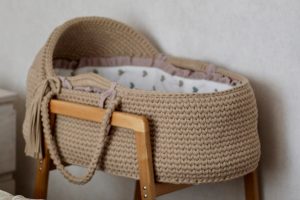When our foster daughter was 2, we had to give her up for Lent. She
had lived with us just over a year at the time, and over the course of
that year her biological father had taken the parenting classes and met
the conditions the court required for her to be placed in his custody.
We knew that the timing of the return was such that she would be moved
from our house right before Easter.
That Lent stands out as the most difficult of my life. Week by week, she began spending more and more time with her biological father. A full day. An overnight. A weekend.
When the time came, my husband and I and our two sons, then 5 and 9, said goodbye by blessing her with the Irish prayer, “May the road rise to meet you,” and buckled her into the car seat in the back of the social worker’s car. I remember waving as the car turned the corner, hoping that the children’s court judge knew what he was doing in placing that child in her father’s custody, but not really believing that he did.
It was my belief in the Resurrection that got me through. We went on vacation with the boys that spring break and happened upon an amazing Mass on Easter Sunday. The congregation was beautifully multicultural; the readings and homily were radiant with life; the music inspiring. Yes, the Mass said to me, yes, Jesus died on the cross. But now he lives. I thought of our little girl and hung onto the Resurrection.
Six years later, we’re once again
entering Lent with her. Her first placement with her father at age 2
lasted a little more than two years before she was placed with us in
foster care again. She lived with us from age 4½ to 5.
Her father once again met the conditions for return, and she was sent back to him a second time. The placement that time lasted just a year before she was removed from him for the third time and was once again moved into our home.
This Lent, our girl has been with us a little over two years since she arrived for that third time. Her mother and father have been barred by the courts from further contact with her. This Lent, Milwaukee’s Children’s Court system has scheduled a jury trial to determine if their parental rights should be terminated.
Our foster daughter is 8 now and lives with wounds I will never fully understand. But she also exhibits joy, resiliency, and faith that I wouldn’t have believed possible if I had not experienced them firsthand. Our family’s journey with her has been our own passion—a cycle of suffering and new life. We are still awaiting the Resurrection. Still waiting to adopt her. This Lent we may get several steps closer. And next Lent we may be all the way there.
My daughter has forever changed Lent for me. She has changed how I view waiting and how I view suffering. Because of her, I better understand the weight of a cross and why Jesus fell three times. And because of her, I pray I will one day better understand the Resurrection.
Many people talk about giving up something for Lent or trying to start something new and good. And I see the value in that—I’ve done it myself, and I’ll do it again.
But another approach to Lent is to take a look at an existing desert in our lives and to enter into that desert rather than try to sidestep it.
Lent can be a time to acknowledge the weight of the cross we’ve been asked to bear and to give ourselves completely to the job of carrying that cross. Take on the suffering. But most important, believe that the suffering will lead to new life, to Resurrection.
This article was originally published in the March 2010 issue of At Home with our Faith.
Image: Unspash cc via Xavier Mouton Photographie













Add comment